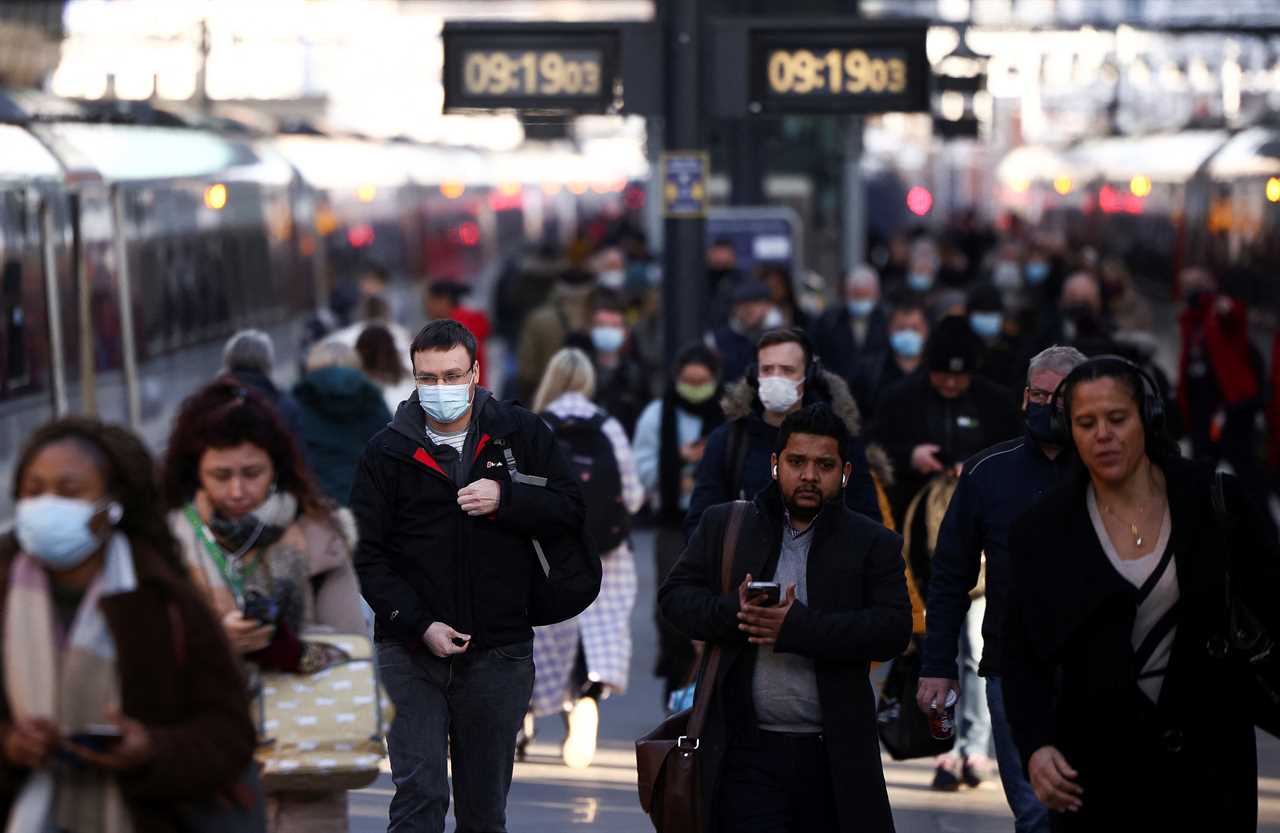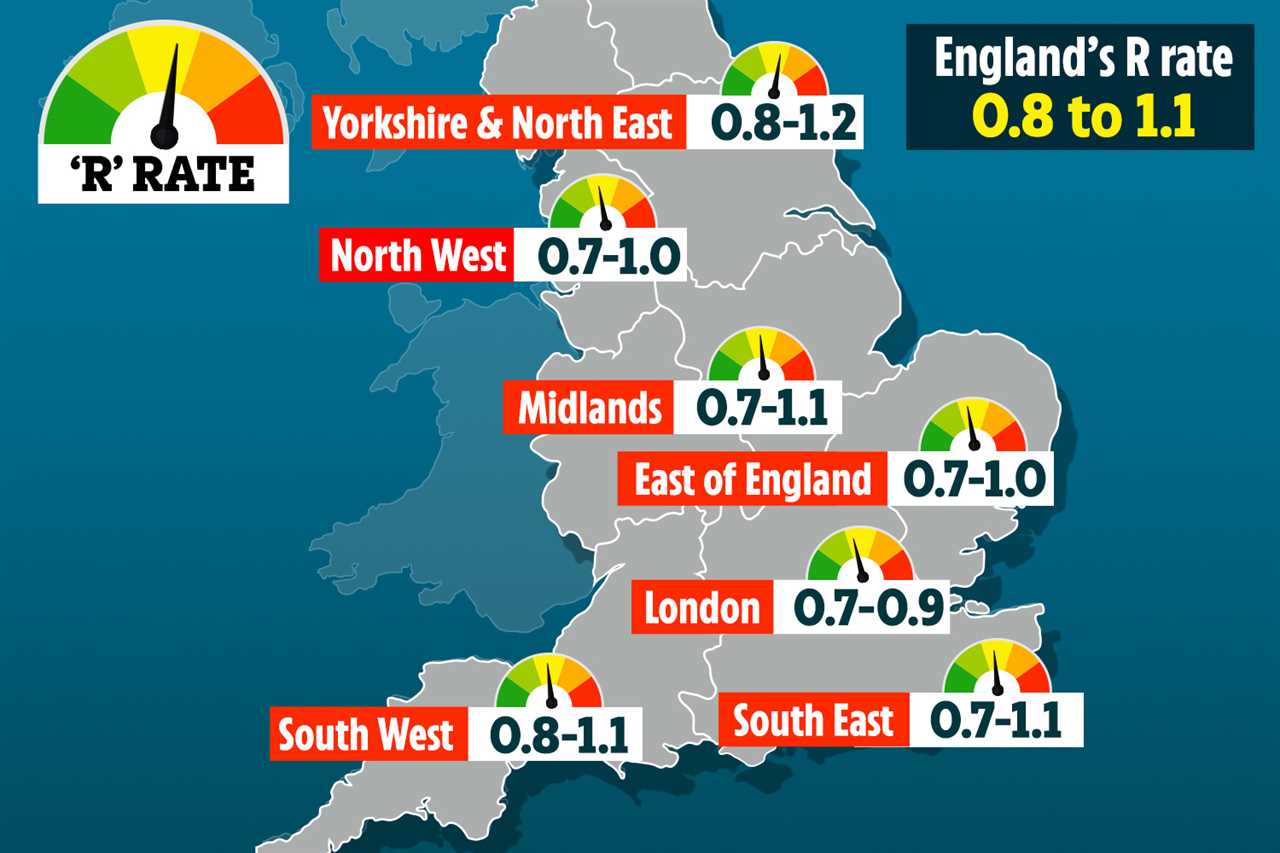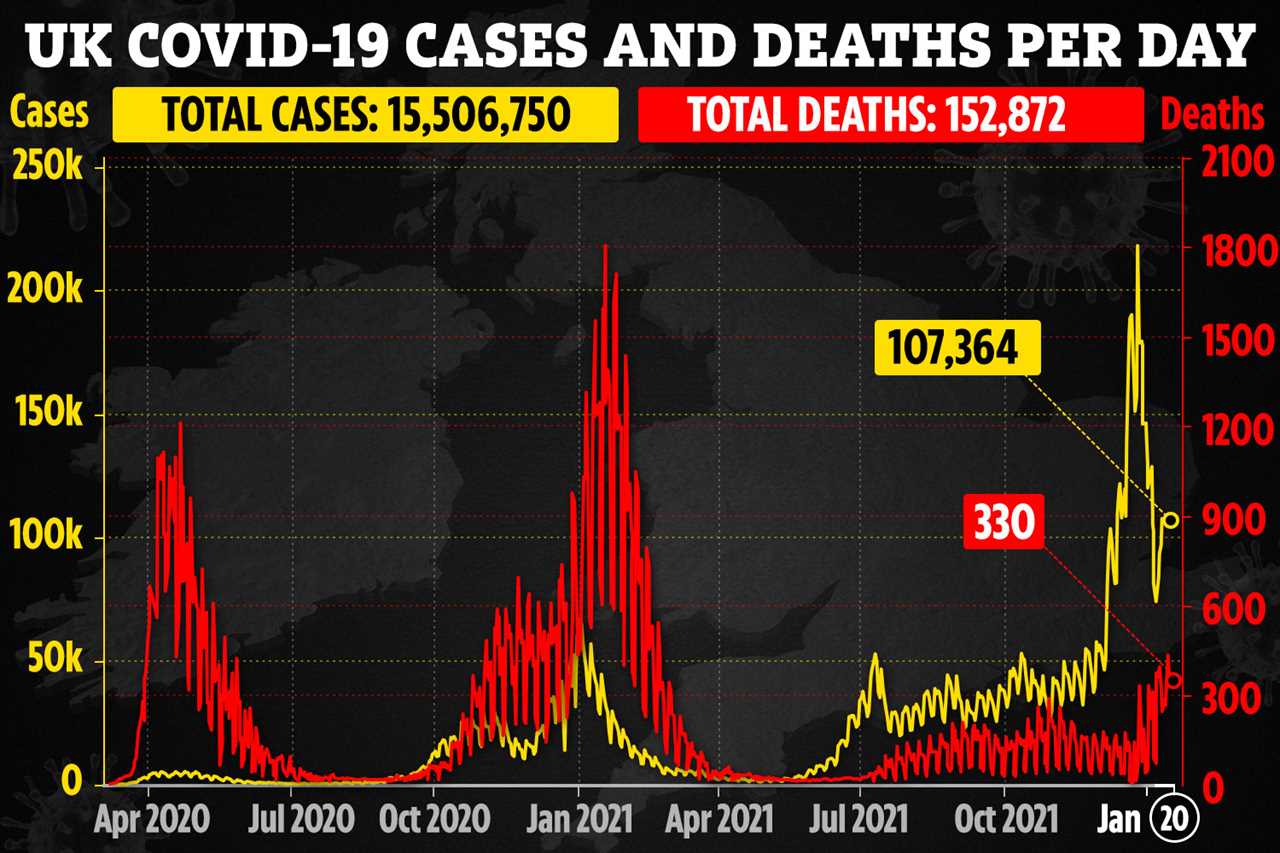THE crucial coronavirus R rate has fallen dramatically this week in another sign that Omicron has peaked in England.
The R rate now sits between 0.8-1.1 in England, crashing down from 1.1-1.5 last week.


It comes as Prime Minister Boris Johnson announced an end to Plan B restrictions, with working from home being scrapped.
Hated vaccine passports will be dumped along with requirement to wear face masks anywhere indoors.
The guidance to work from home was dropped effective immediately – meaning Brits could go back to the office this week.
The remaining rules will expire on January 26, meaning the changes will kick in on Thursday morning.
Scientists have also said that Omicron deaths have peaked and will start to drop within days.
Projections from the SPI-M modelling group, shown to ministers last week, estimated deaths would peak around January 16 before falling again.
The group said deaths would likely top out at around 250 per day.
England’s current average is 231 per day and the figure fell on Wednesday after stalling between 230 and 240 for the past week.

Follow our Covid live blog for all the latest updates
An R value between 0.8 and 1.1 means that, on average, every 10 people infected will infect between 8 and 11 other people.
The growth rate in England is currently -6 per cent to one per cent.
This means that the number of infections could be broadly flat, shrinking up to six per cent every day or growing by up to one per cent every day.
The North East and Yorkshire still has the highest R rate in the country, sitting between 0.8 to 1.2.
It’s followed by the South West, where the R rate sits between 0.8 and 1.2.
In the South East and the Midlands, the R rate is between 0.7 to 1.1 and in the North West and in the East of England, it sits between 0.7 to 1.
London, which had seen the first wave of Omicron infections and had been an epicentre of cases, currently has the lowest R rate in the country, sitting between 0.7 to 0.9.
The R rate aligns with current estimations from the Office for National Statistics (ONS) which states that cases have decreased in all areas of England, aside from the North East and the South West where the trends are currently uncertain.
OMI-GONE
The latest data on infections from the government states that infections have decreased in the last week.
Yesterday a further 107,364 coronavirus cases were reported and an additional 330 deaths within 28 days of a positive test.
The Omicron variant has been proven to be milder for some people and most who have caught it have reported cold-like symptoms.
A string of hugely positive studies show Omicron is milder than other strains in the vaccinated, with the first official UK report revealing the risk of hospitalisation is 50 to 70 per cent lower than with Delta.
Covid booster jabs protect against Omicron and offer the best chance to get through the pandemic, health officials have repeatedly said.
Trending In The News’s Jabs Army campaign is helped get the vital extra vaccines in Brits’ arms to help restrictions be removed.







